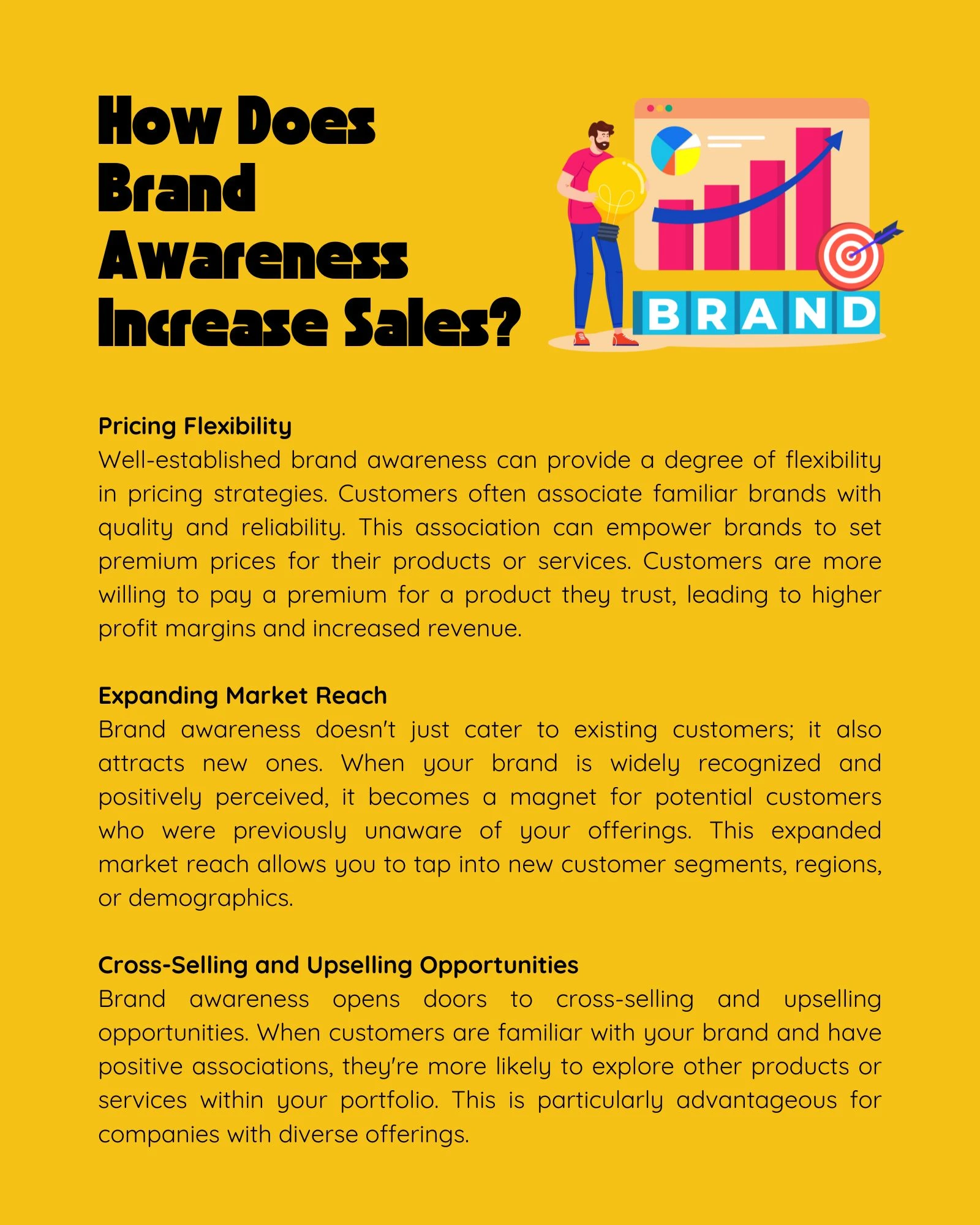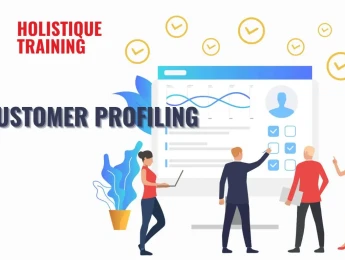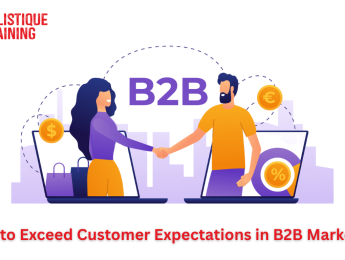- Table of Contents
- What Is Brand Awareness?
- Why Is Brand Awareness Important?
- Building Trust
- Competitive Advantage
- Customer Loyalty
- Brand Awareness and the Customer Journey
- Awareness Stage
- Consideration Stage
- Conversion Stage
- Loyalty
- Brand Awareness and B2B Marketing
- The Credibility Factor
- Navigating the Buying Committee
- Influencing the Long Game
- The Digital Landscape
- How Does Brand Awareness Increase Sales?
- Pricing Flexibility
- Expanding Market Reach
- Cross-Selling and Upselling Opportunities
- The Difference Between Brand Awareness and Brand Recognition
- Brand Awareness
- Brand Recognition
- Steps to Building a Brand Awareness Strategy
- Define Your Brand
- Consistent Brand Identity
- Content Marketing
- Influencer Marketing
- Social Media Engagement
- How to Measure Brand Awareness
- Surveys and Questionnaires
- Web Analytics
- Social Media Metrics
- Brand Sentiment Analysis
- Harnessing the Power of Brand Ambassadors
- Identifying the Right Brand Ambassadors
- Benefits of Brand Ambassadors
- Nurturing and Supporting Brand Ambassadors
- The Psychology of Color in Brand Awareness
- Colour Associations
- Colour Consistency
- Cultural and Contextual Differences
- The Rise of Sensory Branding
- Multisensory Branding
- Benefits of Sensory Branding
- Challenges of Sensory Branding
- Conclusion
Introduction
In today's fiercely competitive business landscape, brand awareness is a formidable pillar of success. Crafting a robust brand identity that resonates with your target audience can yield substantial dividends in terms of growth and profitability. This blog post delves into the intricate world of brand awareness, elucidating its significance, exploring effective techniques for bolstering it, and examining its role in the customer journey. Furthermore, we'll unravel its relevance in B2B marketing and unveil strategies to measure its efficacy.
What Is Brand Awareness?
Brand awareness, in essence, is the degree to which consumers recognize and recall a particular brand, its products, or services. It embodies consumers' familiarity and associations with a brand, often resulting from repeated exposure to elements such as its name, logo, tagline, or other brand identifiers. Essentially, brand awareness represents the visibility and prominence of a brand in the minds of consumers.
Why Is Brand Awareness Important?
The importance of brand awareness is paramount and multifaceted:
Building Trust
Familiarity begets trust. When customers are acquainted with a brand, they develop a level of trust and confidence. They are more inclined to choose a familiar brand over competitors when purchasing. Trust serves as a cornerstone of brand loyalty.
Competitive Advantage
A heightened level of brand awareness sets your business apart from competitors. It solidifies your unique value proposition and gives you a distinct edge in the market. In a crowded marketplace, standing out is often half the battle won.
Customer Loyalty
Strong brand awareness fosters customer loyalty. Customers who have positive experiences with a brand and resonate with its identity are more inclined to become repeat customers and vocal brand advocates. This loyalty translates into long-term profitability and resilience against market fluctuations.
Brand Awareness and the Customer Journey
Brand awareness isn't a monolithic concept but an integral part of the customer journey, representing the path from initial awareness to purchase. Let's explore how brand awareness harmonizes with each stage of the marketing funnel:
Awareness Stage
At the pinnacle of the funnel lies the awareness stage, where the focus is on capturing the attention of potential customers and introducing your brand. This is where brand awareness techniques shine. Implementing effective strategies ensures your target audience understands your brand's existence and value proposition.
Channel | Description |
Social Media | Engage and connect with your audience |
Content Marketing | Share valuable content |
Advertising | Increase brand visibility |
Public Relations | Craft a positive brand image |
Table 1: Channels for Building Brand Awareness
Effective awareness-stage strategies involve creating brand visibility through various channels, including social media engagement, content marketing, advertising, and public relations. Consistent messaging, compelling storytelling, and captivating visuals are key elements that can help your brand stand out and leave a lasting impression on potential customers.
Consideration Stage
As customers move into the consideration stage, they begin evaluating different options and weighing the pros and cons before making a purchase decision. Brand awareness plays a pivotal role here, influencing the customer's consideration set.
Repetition of your brand messaging and value proposition is crucial to maintaining a strong presence during the consideration stage. This can be achieved through content marketing, thought leadership articles, case studies, and customer testimonials. By consistently delivering valuable and informative content, you position your brand as a trusted and reliable choice, increasing the likelihood of being considered by potential customers.
Conversion Stage
In the conversion stage, potential customers are ready to make a purchase. At this point, brand awareness can give your brand a competitive edge by influencing the final decision. A well-established brand with strong awareness and positive associations is likelier to win over potential customers.
To maximize the impact of brand awareness in the conversion stage, focus on building trust and reinforcing your brand's unique selling points. This can be achieved through personalized communication, tailored offers, and excellent customer service. By providing a seamless and positive customer experience, you solidify your brand's reputation and increase the chances of converting potential customers into loyal patrons.
Loyalty
Even after a customer has purchased, brand awareness plays a pivotal role in the loyalty stage. Satisfied customers with a high level of brand awareness are more likely to become loyal customers, brand advocates, and repeat purchasers.
To nurture customer loyalty and advocacy, maintain a consistent brand presence through personalized follow-ups, email marketing, loyalty programs, and engaging content. By consistently delivering on your brand promise and exceeding customer expectations, you reinforce brand awareness and create a positive feedback loop that drives repeat purchases and word-of-mouth referrals.
By understanding the profound connection between brand awareness and the customer journey, businesses can strategically align their brand-building efforts to guide potential customers through each stage. By creating a strong brand presence, delivering valuable content, building trust, and providing exceptional customer experiences, brands can maximize the impact of their marketing efforts and drive long-term success.
Brand Awareness and B2B Marketing
Brand awareness holds a distinctive place in the realm of business-to-business (B2B) marketing. While B2B transactions may involve longer sales cycles, intricate decision-making processes, and multiple stakeholders, brand awareness remains pivotal. Understanding how brand awareness functions in the B2B context can provide valuable insights into its role in building credibility, fostering trust, and influencing purchasing decisions within the corporate landscape.
The Credibility Factor
Credibility is paramount in B2B, where complex solutions and substantial investments are the norm. Companies seek partners they can trust to deliver on promises. This is where brand awareness comes into play. A strong brand reputation and awareness can help establish immediate credibility.
Imagine a scenario where two technology firms are vying for a lucrative contract. Company A has a well-known brand with a reputation for reliability and innovation, while Company B is relatively unknown. Even before the formal proposal stage, Company A holds a substantial advantage. The prospect's familiarity with their brand engenders a sense of trust, making it more likely for Company A to be considered.
Navigating the Buying Committee
In B2B transactions, decisions are rarely made by a single individual. A buying committee, often comprising professionals from various departments, collaborates to evaluate options and make informed choices. Here, brand awareness serves as a unifying factor.
Consider a company looking to adopt new project management software. The IT department may prioritize technical specifications, while the finance team emphasizes cost efficiency. Brand awareness helps ensure that your brand is considered across these diverse perspectives. When buying committee members positively associate with your brand, it can bridge gaps and facilitate consensus, ultimately expediting the decision-making process.
Influencing the Long Game
B2B relationships are seldom one-off transactions; they often evolve into long-term partnerships. Building brand awareness in B2B marketing is an investment in future success. Companies that prioritize brand awareness from the outset establish themselves as reliable partners, setting the stage for lasting relationships.
Moreover, B2B brands with high awareness levels are more likely to enjoy the benefits of repeat business. When clients have positive experiences and a high level of brand awareness, they tend to become loyal customers, returning for additional services, upgrades, or expansions. This repeat business bolsters revenue and validates the brand's reputation.
The Digital Landscape
In today's digital age, where information is readily available, B2B buyers conduct extensive research before making decisions. This research often includes exploring a brand's online presence and reputation. Maintaining a strong online brand presence through content marketing, thought leadership, and engaging social media can significantly impact the perception of your brand within the B2B sphere.
Furthermore, online brand awareness facilitates connections between industry professionals. Networking and community-building efforts on platforms like LinkedIn can help your brand become a trusted resource and a go-to source of expertise in your industry.
Brand awareness is not limited to consumer-facing businesses; it's equally crucial in B2B marketing. By focusing on building and maintaining brand awareness within the B2B landscape, companies can establish credibility, navigate complex decision-making processes, influence long-term partnerships, and thrive in the ever-evolving digital ecosystem. Recognising the unique dynamics of B2B brand awareness is key to success in this competitive arena.
How Does Brand Awareness Increase Sales?
Brand awareness plays a pivotal role in influencing consumer behaviour and, ultimately, boosting sales. While we've already explored the impact of brand awareness on consideration and repeat purchases, there are additional facets to how it drives sales:

Pricing Flexibility
Well-established brand awareness can provide a degree of flexibility in pricing strategies. Customers often associate familiar brands with quality and reliability. This association can empower brands to set premium prices for their products or services. Customers are more willing to pay a premium for a product they trust, leading to higher profit margins and increased revenue.
Luxury brands like Apple or Rolex can command significantly higher prices than competitors due to the trust and loyalty they've cultivated through strong brand awareness.
Expanding Market Reach
Brand awareness doesn't just cater to existing customers; it also attracts new ones. When your brand is widely recognized and positively perceived, it becomes a magnet for potential customers who were previously unaware of your offerings. This expanded market reach allows you to tap into new customer segments, regions, or demographics.
For example, a well-known athletic apparel brand targeting young adults may find that its awareness efforts attract older generations looking for quality sportswear. By broadening its market reach, the brand can increase its sales potential.
Cross-Selling and Upselling Opportunities
Brand awareness opens doors to cross-selling and upselling opportunities. When customers are familiar with your brand and have positive associations, they're more likely to explore other products or services within your portfolio. This is particularly advantageous for companies with diverse offerings.
Consider an e-commerce giant like Amazon. Its strong brand awareness initially drew customers for online shopping. However, it has expanded over time into diverse product categories, such as streaming services and smart devices. Existing customers, comfortable with the Amazon brand, are more inclined to try these additional services, resulting in increased sales across various segments.
The Difference Between Brand Awareness and Brand Recognition
Brand awareness and brand recognition are intertwined concepts yet possess distinct nuances. While they both revolve around a brand's identity, they diverge in scope and depth:
Brand Awareness
This encompasses the breadth of familiarity and knowledge about a brand. It extends beyond mere recognition and delves into a deeper understanding of the brand, its values, and its offerings.
Aspect | Brand Awareness | Brand Recognition |
Definition | Familiarity with brand | Identifying brand |
Depth of Knowledge | Deeper understanding | Surface-level awareness |
Scope of Perception | Knowledge and associations | Visual or auditory cues |
Consumer Interaction | Influences behaviour | Prompts acknowledgment |
Importance in Marketing | Guiding customer journey | Initial stage of awareness |
Measurement | Surveys, sentiment, metrics | Recall from visual cues |
Example | Familiarity with brand values | Recognising a logo |
Table 2: Key differences between brand awareness and brand recognition behaviour
Brand Recognition
It represents the initial stage of brand awareness. Brand recognition occurs when consumers can associate a brand's logo, slogan, or other elements with the brand itself. It is the foundation upon which brand awareness is built.
Steps to Building a Brand Awareness Strategy
Developing a robust brand awareness strategy necessitates a series of deliberate steps:
Define Your Brand
Clearly articulate your brand's mission, values, and unique selling points. Understand your target audience and how your brand can fulfil their needs. This foundational step lays the groundwork for all subsequent brand-building efforts.
Consistent Brand Identity
Create a cohesive and recognizable brand identity across all touchpoints. This includes your logo, colour scheme, typography, and tone of voice. Consistency builds familiarity and strengthens brand recall, ensuring your brand is easily recognizable and memorable.
Content Marketing
Produce high-quality content that aligns with your brand's values and resonates with your target audience. Use various formats such as blog posts, videos, podcasts, and social media content to reach a wider audience. Quality content not only attracts attention but also keeps audiences engaged and informed. Videos, in particular, are highly engaging and can effectively convey your message. Utilise a free online video editor to create professional-looking videos without a hefty budget. These tools offer various features that make editing, enhancing, and personalising your videos easy, ensuring they align with your brand's aesthetics and messaging.
Influencer Marketing
Collaborate with influencers who have a strong following in your niche. Their endorsement can significantly increase brand visibility and reach new audiences. Partnering with influencers who align with your brand's values and target audience can amplify your message effectively.
Social Media Engagement
Leverage social media platforms to engage with your target audience, share valuable content, and participate in relevant conversations. Building an active online community around your brand helps strengthen brand awareness. Regular interaction with your audience fosters a sense of connection and loyalty.
How to Measure Brand Awareness
Measuring brand awareness is pivotal in gauging the effectiveness of your brand-building efforts. Several methods can provide valuable insights into the extent of your brand's awareness:
Surveys and Questionnaires
Conduct surveys or questionnaires among your target audience to gauge brand recognition and recall. Ask specific questions to assess their level of familiarity with your brand and its offerings. Analyzing the responses provides quantifiable data on your brand's awareness.
Web Analytics
Dive into website analytics to understand how well your brand attracts and engages potential customers online. Metrics such as unique visitors, page views, and time spent on your site offer insights into your brand's online visibility and appeal. Tools like Google Analytics and Semrush can aid in this endeavour.
Social Media Metrics
Monitor engagement metrics on social media platforms, including likes, comments, shares, and mentions. Higher engagement signifies a strong brand presence and awareness on social media. Analysing these metrics provides valuable feedback on your social media marketing efforts.
Brand Sentiment Analysis
Conduct sentiment analysis by examining social media conversations and online reviews related to your brand. Analyzing customer sentiment helps gauge overall perception and sentiment toward your brand. Positive sentiment indicates a higher level of brand awareness and customer satisfaction.
Harnessing the Power of Brand Ambassadors
One intriguing aspect of brand awareness is the potential to leverage brand ambassadors to enhance visibility and credibility. Brand ambassadors are individuals who passionately promote and embody your brand's values. They can be celebrities, influencers, or even loyal customers. By enlisting their support, you can tap into their existing followers and fan base to amplify your brand's reach and increase sales, according to Legacy Marketing.
Identifying the Right Brand Ambassadors
Selecting the right brand ambassadors is a crucial first step. Look for individuals whose personal brand aligns with your business values and target audience. Their authenticity and credibility play a pivotal role in fostering trust among their followers. When considering potential brand ambassadors, consider factors such as their reach, engagement levels, and the relevance of their content to your brand.
Criteria | Description |
Alignment with Brand | Their personal brand values align with your business |
Reach and influence | They have a substantial and engaged following |
Authenticity | They genuinely resonate with and use your products |
Credibility | They are trusted figures in their niche or industry |
Relevance of content | Their content is relevant to your brand and audience |
Table 3: Characteristics of ideal brand ambassadors
Benefits of Brand Ambassadors
Extended Reach: Brand ambassadors introduce your brand to their followers, expanding your reach exponentially. This is particularly valuable if the ambassador has a large and engaged following.
Credibility
Endorsement from a trusted figure can enhance your brand's credibility. People are more likely to believe and connect with a brand when it's recommended by someone they respect.
Content Creation
Brand ambassadors often generate authentic and relatable content featuring your products or services. This user-generated content can be invaluable for showcasing real-life experiences with your brand.
Community Building
Ambassadors can help build a community of brand enthusiasts. Participating in discussions, events, and collaborations fosters a sense of belonging among your customers.
Nurturing and Supporting Brand Ambassadors
Once you've enlisted brand ambassadors, it's crucial to maintain a healthy and mutually beneficial relationship. Provide them with the tools and resources they need to promote your brand effectively. This might include exclusive access to new products, behind-the-scenes content, or financial incentives.
Engage regularly with your brand ambassadors and show appreciation for their efforts. Recognize their contributions and celebrate their successes. Encourage them to share their authentic experiences with your brand, which will resonate more with their followers.
Incorporating brand ambassadors into your brand awareness strategy can be a powerful way to enhance your brand's visibility and authenticity. It's an interesting and dynamic approach that capitalizes on the influence of individuals who genuinely believe in your brand.
The Psychology of Color in Brand Awareness
Ever wondered why certain colours are associated with specific brands? The psychology of colour is a fascinating aspect of brand awareness. Colours can evoke emotions, convey messages, and leave lasting impressions on consumers. Understanding the psychology of colour can help businesses make informed decisions when crafting their brand identity.
Colour Associations
Different colours evoke distinct emotions and associations. For example:
Red
Often associated with passion, excitement, and energy. It can create a sense of urgency and grab attention, making it suitable for brands that evoke strong emotions.
Blue
It represents trust, reliability, and professionalism. Financial institutions and tech companies commonly use it to instil confidence in their services.
Green
Symbolises growth, health, and nature. Brands in the eco-friendly and wellness industries often use green to convey their values.
Yellow
Evokes optimism, positivity, and warmth. Brands commonly use it to create a cheerful and approachable image.
Colour Consistency
Maintaining consistent brand colours across all touchpoints is crucial for brand recognition. When consumers repeatedly encounter the same colours associated with a brand, they build strong associations with those colours and the brand itself. This consistency extends to elements such as logos, packaging, and marketing materials.
Cultural and Contextual Differences
It's essential to consider cultural and contextual factors when choosing brand colours. Colours may have different meanings in various cultures. For example, while white symbolizes purity and simplicity in Western cultures, it represents mourning in some Asian cultures. The context in which colours are used can also impact their interpretation.
Understanding the psychology of colour and its role in brand awareness allows businesses to make informed decisions when designing their brand identity. It's a captivating aspect of branding that highlights the intricate interplay between design and consumer perception.
The Rise of Sensory Branding
In an era where consumers are bombarded with information, brands increasingly use sensory branding to stand out and leave a lasting impact. Sensory branding involves appealing to consumers' senses beyond just sight and sound. It engages touch, taste, and smell to create memorable brand experiences.
Multisensory Branding
Multisensory branding aims to create a holistic brand experience by engaging multiple senses. For instance:
Touch
Brands like Apple have mastered tactile sensations through their product designs. The smooth feel of an iPhone or the satisfying click of a MacBook's keyboard contributes to the overall brand experience.
Taste and Smell
Food and beverage brands, in particular, harness taste and smell to create powerful associations. Think of the distinct aroma of Starbucks coffee or the unique taste of Coca-Cola.
Benefits of Sensory Branding
Emotional Connection
Engaging multiple senses can forge deeper emotional connections with consumers. When a brand triggers positive sensory experiences, it becomes more memorable and appealing.
Differentiation
Sensory branding can set a brand apart from competitors. By creating unique sensory experiences, a brand can carve out a distinct niche in consumers' minds.
Brand Recall
Sensory elements enhance brand recall. Consumers are more likely to remember a brand that has left a sensory imprint, whether it's a particular scent or a memorable texture.
Challenges of Sensory Branding
Sensory branding isn't without its challenges. Achieving consistency in sensory experiences across various touchpoints can be complex. Moreover, not all industries or products lend themselves easily to sensory branding.
However, brand awareness and loyalty rewards can be substantial for brands that can successfully implement sensory elements. Sensory branding is an exciting frontier in the world of brand awareness, offering businesses new and innovative ways to connect with their audience on a profound level.
Conclusion
Building brand awareness is an indispensable facet of any successful marketing strategy in the ever-evolving landscape of modern business. By implementing the techniques discussed in this blog post, businesses can forge a strong brand presence, differentiate themselves from competitors, and foster deeper customer engagement and loyalty. It's essential to remember that brand awareness is an ongoing effort that demands consistency, creativity, and continuous evaluation. By prioritising brand awareness, businesses can pave the way for enduring success in today's fiercely competitive marketplace. If you're eager to delve deeper into the fascinating world of brand management and learn how to craft a brand that resonates with your target audience, make sure to check out our comprehensive course, ‘Brand Management & Corporate Identity.’ This course will equip you with the knowledge and strategies needed to master the art of brand awareness and set your business on the path to enduring success in today's fiercely competitive marketplace.

























